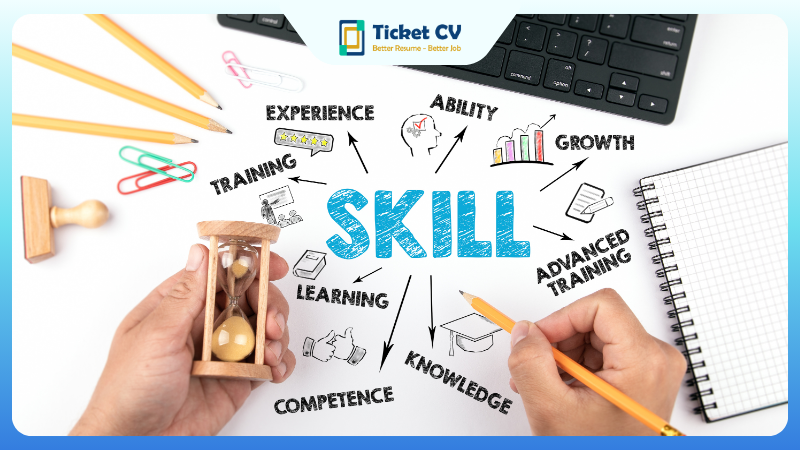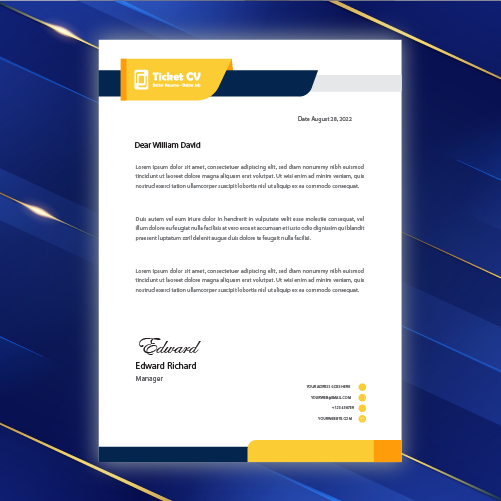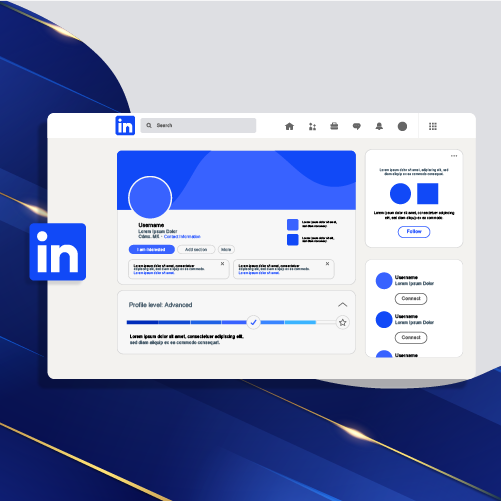Showcasing good working skills in a job application, cover letter, or presentations is crucial in making a positive impression on potential employers. A well-crafted resume and cover letter should effectively highlight both hard and soft skills, providing a comprehensive overview of an individual’s work history and ability. Understanding the significance of these essential working skills, such as writing ability, plays a pivotal role in crafting an impactful cover letter and resume for jobs.
Hiring managers and recruiters seek candidates who possess relevant job skills, leadership qualities, are adept at presentations, and bring innovative ideas to the table. Including concrete examples of one’s relevant skills and personal skills in various situations such as project management, research, or team collaboration within specific sections like “Projects” or “Responsibilities” can significantly enhance the overall appeal of a resume and demonstrate top skills.
Contents
ToggleEssential Skills for Your Resume
Hard skills play a critical role in showcasing one’s work history, achievements, and qualifications for jobs. These are specific, teachable relevant skills that can be quantified and measured. It’s important to highlight achievements and ability in a separate skills section. For instance, in the technology industry, specific examples of computer skills and achievements in proficiency in coding languages like Python or Java are highly sought after for jobs.
Employers and recruiters value hard skills as they directly relate to job requirements, tasks, and work achievements. Including a dedicated skills section on the resume allows candidates to showcase their relevant technical abilities prominently to recruiters. This helps in securing jobs.
To effectively highlight work-related skills on a resume, candidates should use bullet points to list specific skill sets under each job experience. This can help them stand out to recruiters and increase their chances of landing jobs. This helps recruiters and hiring managers quickly identify the candidate’s ability to highlight their skills for jobs without having to sift through lengthy paragraphs.
For example:
- Computer programming languages (e.g., C++, JavaScript)
- Financial modeling and analysis
- Graphic design software proficiency (Adobe Creative Suite)
Highlighting these specific experience and ability skills demonstrates an individual’s expertise in their field and makes them stand out among other applicants to jobs and recruiters.
Soft Skills Synopsis
In addition to hard skills, soft skills and work experience are also crucial for employability, as they provide specific examples of your abilities that recruiters look for. These personal attributes highlight an individual’s ability to interact with others and handle their responsibilities at work, which can be valuable for recruiters looking at resume skills. Employers highly value soft skills such as organizational and communication abilities because they highlight the ability to contribute to a positive work environment.
Soft skills play an essential role in highlighting the ability for effective teamwork, leadership potential, conflict resolution, and overall productivity within an organization.
Examples of key soft skills valued by employers include:
- Interpersonal communication
- Time management
- Adaptability and resume skills. These qualities demonstrate an individual’s ability to collaborate with colleagues effectively while managing their workload efficiently and highlight their resume skills.
Incorporating soft skills into a resume involves integrating them into the professional summary or using brief anecdotes within the work experience section that highlight the ability of these traits to positively impact previous roles.
Entry-Level Essentials
For individuals entering the workforce or transitioning between careers, highlighting entry-level essentials is crucial when crafting a compelling resume lacking extensive experience.
Identifying crucial entry-level skills, such as customer service or basic project management capabilities, can help highlight demonstrate potential even without substantial prior employment history. Tailoring resumes specifically for entry-level positions involves emphasizing transferable experiences that highlight relevant competencies required for the desired role, such as internships, volunteer work, or academic projects.
By highlighting both hard and soft skill sets tailored specifically for different industries or career levels onto one’s resume can significantly improve its impact on potential employers’ first impressions of your qualifications.

Differentiating Hard and Soft Skills
It’s essential to understand the distinction between hard and soft skills. Hard skills are specific, teachable abilities that can be quantified. For instance, computer programming, graphic design, or proficiency in a foreign language are considered hard skills.
Employers often seek candidates with particular hard skills that directly relate to the job requirements. These technical proficiencies play a crucial role in meeting specific job demands. For example, if an organization is hiring for a data analyst position, they would prioritize candidates who possess strong analytical and statistical modeling skills.
In addition to being job-specific and measurable, hard skills can be acquired through education or training programs. Including these dedicated skill sets in a separate section of the resume allows potential employers to quickly identify whether an applicant possesses the necessary qualifications for the role.
An effective way of differentiating between hard and soft skills is by considering examples such as computer programming or design expertise as instances of specific skill sets that fall under the category of hard skills.
Conversely, soft skills refer to personal attributes and interpersonal capabilities that enhance an individual’s interactions with others in professional settings. These include traits like communication abilities, adaptability, leadership qualities, teamwork aptitude among others.
Soft skills significantly influence workplace success by contributing to effective collaboration within teams and fostering positive work environments. Employers value these transferable competencies because they contribute not only to individual performance but also team dynamics and overall organizational culture.
For instance, excellent communication plays a vital role in conveying ideas clearly within a team setting while adaptability enables employees to embrace change positively when faced with new challenges or projects at work.
Including soft skill keywords such as management or communication alongside relevant experiences on resumes helps demonstrate an individual’s ability beyond technical expertise alone.
By understanding how both types of working skills
Effective Skills Listing on a Resume
It’s crucial to position them where they will be most visible and impactful. Hard skills, such as technical abilities or certifications, should be prominently featured at the top of the resume if they are particularly relevant to the job you’re applying for. This ensures that recruiters can quickly identify your qualifications.
For example, if you’re applying for a data analysis role, listing proficiency in programming languages or statistical software at the beginning of your resume can catch the recruiter’s attention right away.
Soft skills like communication or leadership should also have a prominent place on your resume. These can be strategically placed in a separate section following hard skills or integrated throughout your work experience descriptions to showcase how you’ve utilized these qualities in previous roles.
Recruiters often have limited time when reviewing resumes, so making sure that both hard and soft skills are easily accessible is essential. Utilizing bullet points and concise phrases helps create an easy-to-scan format that allows recruiters to quickly assess your qualifications without having to sift through dense paragraphs.
Categorization Tips
When organizing diverse skill sets on a resume, categorization plays a vital role in presenting information clearly and effectively. By grouping related skills into categories, such as technical proficiencies, language fluency, project management abilities, etc., you make it easier for recruiters to identify specific strengths based on their requirements.
For instance:
- Technical Skills: Programming languages (Python, Java), database management
- Soft Skills: Leadership, teamwork
- Language Proficiency: Fluent in Spanish
Categorizing this way not only makes it easier for recruiters but also demonstrates your ability to organize and present information logically – another valuable skill employers look for.
Utilizing sections or columns within your resume layout further enhances categorization by creating clear visual distinctions between different types of skills. This could involve using bold headings like “Technical Skills” or “Soft Skills” followed by bulleted lists underneath each category with relevant examples.

Showcasing Your Skills on a Resume
It’s crucial to demonstrate proficiency levels in various hard and soft skills. This helps employers gauge your expertise and suitability for the job.
Using clear language to indicate skill mastery levels is essential. For instance, instead of just listing “proficient in Microsoft Excel,” specify whether you are at an intermediate or advanced level.
Aligning proficiency levels with job requirements ensures that your resume resonates with the employer’s needs. If a position requires advanced coding skills, clearly stating your advanced proficiency in programming languages will capture the recruiter’s attention.
Highlighting specific skill levels can be achieved through a simple yet effective approach:
- Utilize keywords like “proficient,” “expert,” or “familiar”
- Provide examples or context to support your skill level claims
- Use bullet points for easy readability
Incorporating these elements into your resume allows hiring managers to quickly assess whether you possess the required competencies for the role.
Identifying transferable skills applicable across different roles is pivotal when crafting a compelling resume. These versatile abilities can add significant value to diverse job positions, showcasing adaptability and versatility.
For example, if you’re transitioning from a customer service role to a project management position, emphasizing transferable skills such as communication, problem-solving, and time management underscores your readiness for the new role.
Showcasing how transferable skills can add value involves providing concrete examples of how these skills have positively impacted previous roles. Whether it’s leading cross-functional teams or resolving conflicts within a team setting, real-life instances amplify the relevance of transferable skills on your resume.
Emphasizing adaptability and versatility through transferable skills not only broadens your appeal but also demonstrates your potential contributions beyond specific job functions.
Importance of Tailoring Skills
Job Description Alignment
Tailoring your skills to match the specific requirements outlined in job postings is crucial. By carefully analyzing the job description, you can identify the particular skills and experiences that are most relevant to the position. For instance, if a job posting emphasizes project management skills, ensure that your resume reflects your expertise in this area. Highlighting these specific skills will significantly increase your chances of capturing the attention of potential employers.
Tailoring resumes involves more than just listing generic abilities; it’s about customizing them to align with the exact competencies sought by employers. This tailored approach enables recruiters to quickly spot how well-suited you are for their openings, thereby increasing your likelihood of being shortlisted for interviews. For example, if a company seeks candidates with strong communication and organizational skills, make sure these relevant skills are prominently featured on your resume.
Highlighting relevant experiences that resonate with job descriptions further enhances this alignment process. For instance, if a job posting emphasizes experience working in cross-functional teams or managing multiple projects simultaneously, showcasing such experiences on your resume demonstrates an ideal fit for the role.
Company Profile Matching
Researching company profiles is essential when aiming to align your skill sets with desired employers’ needs. Understanding a company’s values and requirements allows you to tailor your resume effectively by highlighting those aspects of yourself that best match what they’re looking for. If a company prioritizes innovation and creativity, emphasizing design or creative thinking skills can help showcase compatibility with their culture.
Customizing resumes according to target companies’ values not only demonstrates thorough preparation but also showcases cultural fit through tailored skill presentation. When recruiters see evidence of how well-aligned you are with their organization’s ethos and goals within your resume itself, it greatly enhances their perception of you as a potential candidate.
Creating a Comprehensive Skills Section
Structuring Your Skills
Structuring them effectively within the resume layout is crucial. Whether choosing a functional, chronological, or combination format, coherence and flow are essential in presenting diverse skill sets. For instance, if someone has strong leadership and project management skills but lacks direct work experience in those areas, they might benefit from using a functional format to highlight these relevant abilities at the beginning of their resume.
The dedicated skills section should be strategically placed on the resume to ensure that it catches the eye of potential employers quickly. This means positioning it prominently after the summary or objective statement. The separate skills section allows candidates to showcase their expertise clearly without burying this vital information within work experience descriptions.
Skill Expansion Techniques
Expanding existing skill sets through training or education is an effective way to enhance one’s dedicated skills section on a resume. By continuously updating and improving their competencies, individuals demonstrate adaptability and a growth mindset—qualities highly valued by employers. For example, someone with basic coding knowledge can expand this skill set by enrolling in advanced programming courses or obtaining relevant certifications.
Showcasing continuous learning and professional development on the resume not only adds value but also demonstrates commitment to personal improvement. This could involve listing any workshops attended, online courses completed, or industry-related seminars participated in under the education section of the resume.

Backing Up Your Skills in Other Resume Sections
Experience Correlation
Job seekers should seamlessly integrate their skills within the experience section. By doing so, they can effectively showcase how their competencies were applied in previous roles. For instance, if a candidate is applying for a managerial position that requires strong leadership and organizational skills, they should highlight specific instances where they successfully led teams or coordinated complex projects.
Moreover, showcasing practical application of acquired competencies in previous roles can provide concrete evidence of the candidate’s abilities. This involves describing how particular skills were utilized to achieve certain outcomes or solve challenging problems. For example, an individual applying for a customer service role could emphasize how their communication and conflict resolution skills helped them resolve difficult situations while assisting clients.
Aligning experiences with specific skill requirements in targeted positions is crucial as well. Job applicants must ensure that the experience section aligns with the specific skill set sought by potential employers. This alignment reinforces the relevance of their past experiences to the desired job role and clearly demonstrates their suitability for the position.
STAR Methodology
Implementing the Situation, Task, Action, Result (STAR) method for illustrating accomplishments can significantly enhance a resume’s impact. By using this structured approach, candidates are able to present clear examples of when they have successfully utilized their specific skills to achieve positive outcomes.
Using STAR stories to demonstrate problem-solving abilities and achievements allows candidates to provide compelling evidence of their capabilities through real-life scenarios. For instance, an applicant seeking an administrative role could use the STAR method to describe how they efficiently organized office procedures (Task), implemented new filing systems (Action), resulting in improved workflow efficiency and reduced errors (Result).
Enhancing the impact of accomplishments through structured storytelling is essential when including computer skills, management abilities or other relevant competencies on a resume. Through concise yet detailed narratives following the STAR format, candidates can vividly illustrate how they have leveraged these talents in various professional contexts.
Proficiency and Certifications
Communicating Proficiency
Effectively communicating proficiency levels is crucial. Applicants should avoid overstating their abilities by using quantifiable metrics or examples to support claims. For instance, instead of simply stating “proficient in Microsoft Excel,” quantify this skill by mentioning “created complex spreadsheets with pivot tables and VLOOKUP functions.” This provides specific evidence of expertise rather than a generic statement.
Furthermore, applicants must highlight their proficiency without exaggeration. They can demonstrate their communication skills by articulating how they effectively managed a team project, resulting in a 20% increase in productivity. By doing so, they provide concrete evidence of their abilities rather than making vague claims about being an effective communicator.
Highlighting Certifications
In the dedicated skills section of the resume, showcasing relevant certifications is essential to validate hard skill proficiency. For example, if applying for a graphic design position, highlighting Adobe Certified Expert (ACE) certification would reinforce one’s design skills. Positioning these certifications strategically within the resume is equally important; placing them near relevant job experiences or education details emphasizes their significance.
Moreover, demonstrating commitment to professional development through certifications enhances an applicant’s profile. Including professional certificates such as Project Management Professional (PMP) or Certified Public Accountant (CPA) not only validates specific skills but also showcases dedication to continuous learning and improvement.
In addition:
- Showcasing specific software certifications like Cisco Certified Network Associate (CCNA) or Oracle Database SQL Expert.
- Demonstrating proficiency in language skills through internationally recognized language certificates such as TOEFL or IELTS.
- Positioning relevant industry-specific certifications prominently on the resume.
Transferable Skills for Career Transitioners
Identifying Transferable Skills
Transitioning to a new career requires identifying transferable skills that can be applied across different roles. These are the abilities and talents that individuals have developed in previous positions, which remain relevant and valuable in a new job. For instance, someone who has strong communication skills from their previous role as a teacher could effectively use these skills in a corporate setting to convey ideas clearly and persuasively.
It is crucial for career transitioners to showcase how their transferable skills can add value to diverse job positions. By highlighting these strengths, they demonstrate their ability to adapt and thrive in various work environments. This not only emphasizes adaptability but also showcases versatility through the application of transferable skills across different roles.
Presenting Career Shifts Positively
When presenting career shifts on a resume, it’s important to portray them as opportunities for acquiring diverse skill sets rather than as drawbacks. By highlighting the transferable skills gained from previous career paths, individuals can illustrate how they have developed valuable competencies that are applicable in their new professional endeavors. For example, an individual transitioning from sales to human resources can emphasize how their experience in sales has honed their negotiation and conflict resolution abilities – both critical components of effective HR management.
Moreover, by emphasizing flexibility and openness to new challenges, professionals can present themselves as adaptable candidates capable of excelling in varied work settings. This positive portrayal of career shifts underscores the candidate’s willingness to embrace change while leveraging existing expertise – an attractive quality sought after by employers seeking dynamic team members.
Overview of Industry-Specific Skills
Business and Management
When tailoring a resume for business and management roles, it’s crucial to emphasize specific skills that align with industry expectations. Highlighting leadership, decision-making, and strategic planning abilities is essential to stand out in these sectors. For instance, showcasing experience in leading teams or spearheading successful projects demonstrates strong management skills.
Including relevant skills such as financial analysis, budgeting, and market research can further strengthen a resume for business or management positions. By incorporating these specific hard and soft skills into the dedicated section of the resume, candidates can effectively communicate their capabilities to potential employers.
Furthermore, when transitioning careers within the business or management field, emphasizing transferable skills like organizational expertise and project management capabilities is vital. These transferable skills are valuable across various industries within the business sector.
- Leadership abilities
- Decision-making proficiency
- Strategic planning expertise
- Financial analysis
- Budgeting skills
IT and Data Management
For individuals seeking opportunities in IT and data management roles, highlighting technical expertise alongside problem-solving capabilities is paramount. Resumes tailored for these positions should showcase proficiency in data analysis tools, programming languages relevant to the industry’s standards, or specialized software applications commonly used in IT environments.
Moreover, emphasizing specific skill sets such as cybersecurity knowledge or database administration proficiencies can significantly enhance an IT-focused resume. Employers often prioritize candidates who exhibit comprehensive understanding of technological advancements along with adaptability to evolving trends within the industry.
Additionally,job-specificskills, including network infrastructure maintenance or cloud computing competencies should be prominently featured on resumes targeting IT-related roles.
- Technical expertise
- Problem-solving capabilities
- Proficiency in data analysis tools
Conclusion
In today’s competitive job market, a well-crafted resume highlighting essential hard and soft skills is crucial. By effectively showcasing these skills and tailoring them to specific industries, job seekers can significantly increase their chances of landing their desired roles. Remember to back up listed skills with concrete examples in other sections of the resume and emphasize any relevant certifications or proficiencies. For those transitioning between careers, recognizing transferable skills and industry-specific competencies is equally vital for success.
Crafting a compelling skills section on a resume requires attention to detail and a clear understanding of what employers are seeking. By implementing the insights shared in this guide, job seekers can elevate their resumes and stand out to potential employers.
Frequently Asked Questions
FAQ
What are hard skills and soft skills?
Hard skills refer to specific, teachable abilities or knowledge, such as technical proficiencies. Soft skills, on the other hand, encompass personal attributes and interpersonal abilities like communication and leadership.
How should I list my skills on a resume?
When listing your skills on a resume, organize them in a dedicated “Skills” section. Use bullet points for clarity and conciseness. Tailor the listed skills to match the job description and prioritize those most relevant to the position.
Why is it important to tailor my skills for each application?
Tailoring your skill set demonstrates your understanding of the job requirements and shows how you can directly contribute to the role. It helps recruiters quickly identify your suitability for the position.
What are transferable skills?
Transferable skills are versatile abilities that can be applied across various roles or industries. Examples include communication, problem-solving, time management, and adaptability – qualities valued by employers regardless of specific job functions.
How do I showcase industry-specific skills effectively?
To effectively showcase industry-specific skills on a resume, align them with keywords from job descriptions within that particular industry. Provide concrete examples of how these specialized competencies have contributed to past successes in similar roles or projects.












